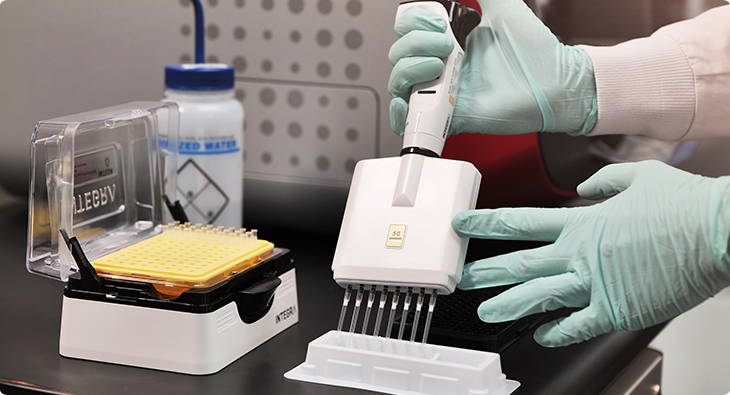At the Ohio State University, scientists are using xMAP® Technology to evaluate the molecular effects of this candidate therapy
Researchers at Ohio State University are making impressive progress toward a cancer vaccine that could potentially be used to treat a broad range of cancers. As a key part of their efforts, they deployed the xMAP INTELLIFLEX® System to streamline testing for key molecular interactions and antibody response related to the treatment.

In a new open-access paper published in JoVE, authors Jay Overholser, Linlin Guo, and Pravin Kaumaya describe their candidate cancer vaccine and detail the multiplex immunoassay testing protocol they developed. “Over the past 30 years, Dr. Kaumaya’s laboratory has developed peptide cancer vaccines and peptide mimic-related agents for cancer therapy, some of which are in ongoing clinical trials,” they note.
Learn the advantages of xMAP Technology over ELISA
Among the lab’s latest candidates is the B-cell peptide epitope cancer vaccine known as PDL1-Vaxx, which is designed to block the PD-1/PD-L1 interaction. The team believes this approach could one day help patients whose cancers do not respond to standard checkpoint monoclonal antibody immunotherapies. “Preclinical testing has indicated that [PDL1-Vaxx] effectively stimulates highly immunogenic antibodies in animals,” the researchers report. “Animals immunized with PDL1-Vaxx show reduced tumor burden and extended survival rates in various animal cancer models.”
Initially, the team assessed the effects of the vaccine candidate using two separate ELISA tests to check for inhibition of the PD1/PD-L1 interaction. But the bead-based xMAP approach offered several advantages, including improved assay sensitivity and a broader dynamic range due to its fluorescence rather than the colorimetric ELISA technique. The xMAP reaction occurs in a fluid suspension, eliminating the binding issues that can arise when proteins must be immobilized on a substrate.
xMAP Technology: achieving more in less time and with less sample volume
xMAP Technology also offers multiplexing capabilities that cannot be achieved with ELISAs. In this project, researchers were able to generate the information from both ELISA assays in a single xMAP reaction, saving both time and sample volume. In addition, more data can be produced thanks to a feature unique to the xMAP INTELLIFLEX System: its dual-reporter function. This enables users to acquire data about two parameters per target protein or nucleic acid at once.
In this study, the team compared their new xMAP assay results to their original ELISA tests, finding a direct correlation between them. “The assay was able to precisely quantify the inhibition of the PD-1/PD-L1 interaction by four unique polyclonal antibodies, generated against the rhPD-L1 vaccine peptides, that are being explored as potential cancer therapeutic agents,” the researchers note.
From vaccine candidate to clinical trial using xMAP Technology
With successful results from the new xMAP-based assay, the researchers now hope to move their cancer vaccine candidate into clinical trials to determine its performance as a potential new immunotherapy.
To learn more, check out the helpful protocol video accompanying the JoVE paper.